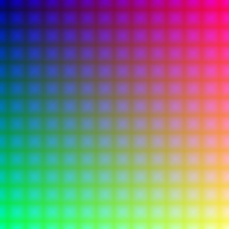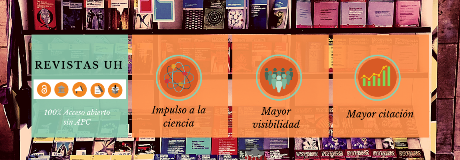The Culture of Color in Design Education
##plugins.themes.bootstrap3.article.main##
Abstract
The profession of designer arose at the same time as the Industrial Revolution in the countries that led this cultural, scientific and technological process in the nineteenth century. The aesthetic and cultural stereotypes of these countries have permeated the scientific and technological content of design theory and pedagogy that has since been published and applied in all countries of the globe. Nowadays, globalization has forced us to revise these stereotypes in order to penetrate Third World markets. The optional subject "Culture of Colour" aims to correct this Eurocentric bias in the training of designers by introducing content on the meanings, connotations and symbologies of colour throughout the planet from Antiquity to pre-industrial times.
##plugins.themes.bootstrap3.article.details##
As of Volume 11, Issue. 21, corresponding to the year 2024, this CC BY-NC 4.0 license replaces the one used in previous issues, namely CC BY-NC-SA 4.0

This work is licensed under a Creative Commons Attribution-NonCommercial 4.0 International License.
- Attribution — You must give appropriate credit , provide a link to the license, and indicate if changes were made . You may do so in any reasonable manner, but not in any way that suggests the licensor endorses you or your use.
- NonCommercial — You may not use the material for commercial purposes .
- No additional restrictions — You may not apply legal terms or technological measures that legally restrict others from doing anything the license permits.
- ShareAlike — If you remix, transform, or build upon the material, you must distribute your contribution under the same license as the original. NOTE: This point applies to numbers 1 to 20 of the magazine with the previous CC-BY-NC-SA 4.0 license. Does not apply to the new CC BY-NC 4.0 license from Volume 11, Number. 21 (2024).
References
Brack, P. (1 de octubre de 2015). Egyptian blue: more than just a colour. Obtenido de Chemistry World: https://www.chemistryworld.com/features/egyptian-blue-more-than-just-a-colour/9001.article
Cashford, J. (2010). El mito de Osiris. Los Misterios de Abidos. Vilaür: Ediciones Atalanta.
Chow, R. (2021). A Face Drawn in Sand: Humanistic Inquiry and Foucault in the Present. Columbia University Press.
Emmer, M. (2022). A Little Homage to Roger Penrose. En Imagine Math 8: Dreaming Venice (págs. 309-316). Cham: Springer International Publishing.
Gabolde, L. (2018). Karnak, Amon-Rê : La genèse d'un temple, la naissance d'un dieu. Cairo: Institut français d'archéologie orientale du Caire.
Hovers, E., Ilani, S., BarYosef, O., & Vandermeersch, B. (2003). An Early Case of Color Symbolism: Ochre Use by Modern Humans in Qafzeh Cave. Current Anthropology, 44(4), 491–522. doi:10.1086/375869
Interaction Design Foundation. (4 de noviembre de 2021). Obtenido de Interaction Design Foundation - IxDF: https://www.interaction-design.org/literature/topics/color-symbolism
Jaksch, H, Seipel, W., Weiner, K. L., & El Goresy, A. (1983). Egyptian blue—cuprorivaite. A window to ancient Egyptian technology. Naturwissenschaften, 70, 525–535.
Jones, N. (9 de febrero de 2017). Do You See What I See? Obtenido de Sapiens: https://www.sapiens.org/language/color-perception/
Jordan, G., Deeb, S., Bosten, J., & Mollon, J. (20 de julio de 2010). The dimensionality of color vision in carriers of anomalous trichromacy. Journal of Vision, 10(8). doi:10.1167/10.8.12
Kay, P., Berlin, B., Maffi, L., Merrifield, W. R., & Cook, R. (2011). World Color Survey. Stanford: CSLI Publications Stanford University.
Kelkar, G., & Nathan, D. (2020). Witch Hunts: Culture, Patriarchy, and Transformation: Culture, Patriarchy and Structural Transformation. Cambridge University Press.
Labanyi, P. (2020). Images of Fascism: Visualization and Aestheticization in the Third Reich. En The Burden of German History 1919-45 (págs. 151-177). Routledge.
Lorenzini, D. (2023). The force of truth: Critique, genealogy, and truth-telling in Michel Foucault. University of Chicago Press.
Nicola, M., Gobetto, R., & Masic, A. (2023). Egyptian blue, Chinese blue, and related two-dimensional silicates: from antiquity to future technologies. Part A: general properties and historical uses. Rendiconti Lincei. Scienze Fisiche e Naturali, 34, 369–413.
Pagès-Camagna, S., & Colinart, S. (2003). The Egyptian green pigment: its manufacturing process and links to Egyptian blue. Archaeometry, 45(4), 637–658.
Preiser-Kapeller, J., Reinfandt, L., & Stouraitis, Y. (2020). Migration histories of the medieval Afroeurasian transition zone: aspects of mobility between Africa, Asia and Europe, 300-1500 CE. Brill.
Reguig, D. (2023). Une querelle pour le présent. Revue d'histoire littéraire de la France, 4, 893-908.
Rogers, B. (2022). When is an illusion not an illusion? An alternative view of the illusion concept. Frontiers in Human Neuroscience, 16, 957740. doi:10.3389/fnhum.2022.957740
Sahu, S. (2021). An Approach to Identify Indigenous Color Palette: A Case Study of Majuli. En A. Chakrabarti, R. Poovaiah, P. Bokil, & V. Kant (Edits.), Design for Tomorrow—Volume 1. Smart Innovation, Systems and Technologies, vol 221 (págs. 655–663). Singapore: Springer.
Warburton, D. A. (2023). Ancient Color Terminology. En R. Shamey (Ed.), Encyclopedia of Color Science and Technology. Cham: Springer. doi:10.1007/978-3-030-89862-5_75
Wróblewska, J. (6 de marzo de 2016). What do colors mean and represent? Obtenido de SAE Alumni: https://alumni.sae.edu/2016/03/08/what-do-colors-mean-and-represent/
Zhou, X., Rau, P., Ohkura, M., Laohakangvalvit, T., & Wang, B. (2022). A Deep Learning-Based Approach to Facilitate Cross-cultural Kansei Design. En P. P. Rau (Ed.), Cross-Cultural Design. Interaction Design Across Cultures (págs. 145–160). Cham: Springer . doi:10.1007/978-3-031-06038-0_11

























